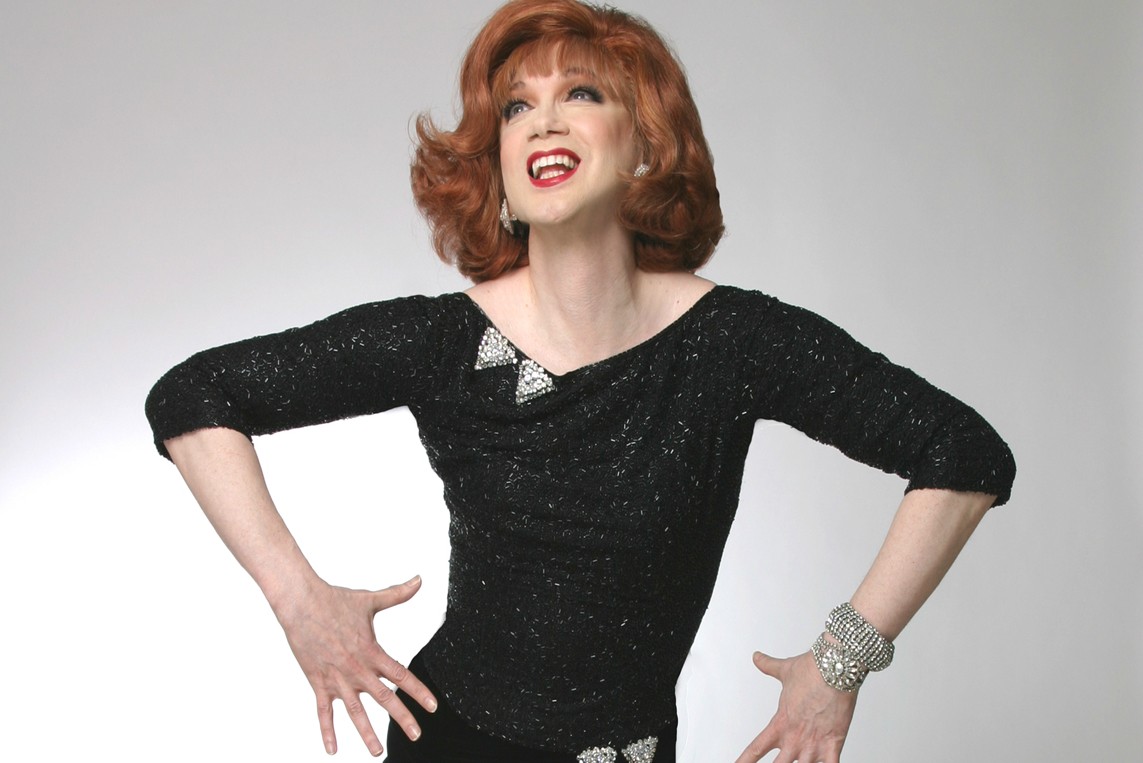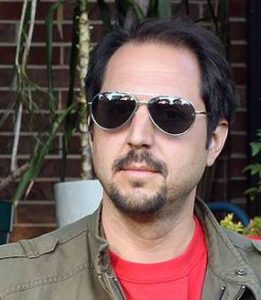
The tradition of cabaret performances goes back nearly 500 years, when it started in France. Since that time, it has spread throughout various European countries and to the US. Within those spectrums of time and locale, cabaret acts have included various unique forms of entertainment, including: musicals, comedy acts, and storytelling. Currently, Charles Busch, a critically lauded and prolific award-winning actor, playwright, novelist, screenwriter, director, drag legend, and vaudevillian has combined all of the above cabaret forms into his latest show, Charles Busch: The Lady at the Mic.
The show was created for Lincoln Center’s American Songbook series and is about to make a stop in Costa Mesa as part of Segerstrom Center’s Cabaret Series. Charles Busch: The Lady at the Mic is Busch’s tribute to five cabaret performers (Elaine Stritch, Polly Bergen, Mary Cleere Haran, Julie Wilson and Joan Rivers) — all of who were friends of Busch and all of who died within the last six years. In advance of Busch’s performance, which features his longtime musical director Tom Judson, the Weekly had an opportunity to ask the versatile entertainer about performing in drag, the performers to whom he is paying tribute, and cabaret in America.
OC Weekly (Scott Feinblatt): How big is the world of female impersonators in show business?
Charles Busch: People are always asking me about RuPaul’s Drag Race, and it’s really quite a different world than my own experience. I come to this all through the cabaret music scene. Essentially my career has been, for the past 40 years, as a playwright and actor in theater, so when I started performing in cabaret, really seriously about five years ago, I [thought] “What is it that I have to offer?” I’m not the world’s greatest singer. I mean, if you really want big, huge, notes, there are other performers that I would recommend, but I like to think that I’m an excellent storyteller. So, my shows are about storytelling. Literally, I probably do about 30 percent talking in my shows, and I like to tell true personal anecdotes, and they’re funny, and sometimes, I hope, touching. Then when I sing songs, I choose songs that come out of the anecdote in a way, and I like to choose songs that are very actable, that I can actually treat as mini-plays. So it all really comes out of my original place as being a playwright and an actor.
What was the inspiration for your Lady at the Mic show?
I wanted to choose a subject that I really knew personally. In this case, there were these five remarkable women of varying degrees of household fame, who passed away in the last few years, all of whom I knew personally. And, with the exception of Joan Rivers, they all were singers. So the songs that I choose to represent them, I link to a personal reminiscence to an experience that I’d had with each of these people. Then, of course, with Joan, she’s certainly not a singer but of these five ladies, she was the one I was the closest to, and I just have a million stories about her. I mean, she was the most fascinating, funny, smart, generous lady, [and she] could be outrageous or rather reserved at times, too…and it’s fun to share those memories with the audience. I [also] talk about a wonderful singer, who died too young, named Mary Cleere Haran, who a lot of people might not have heard of. She really was kind of a cult performer in her own time, in the 90’s. She played very glamorous nightclubs and cabaret rooms in Manhattan, like the Algonquin, and she recorded a number of very well-received CDs, but she suffered the fate that many performers do, whose work is based on the classic American Songbook standards — she had a limited fame, but she was so talented and she was a complex, fascinating, intelligent woman, and even though I think she might have been a year or two younger than me, we were certainly contemporaries, and I learned a lot about popular music from her.
To what extent is this show a farewell to your friends versus a call to attention for audiences who may not be aware of their legacies?
I think that’s very insightful of you; it’s both a tribute to them and an introduction to them. Cabaret performing is probably the most ephemeral of all the arts. It’s unlike a film or even a play that’s seen eight times a week on Broadway. [Plus, many cabaret singers] don’t record much since there’s really not that much of an industry for non-contemporary songs. So, yeah, I think that I’m both introducing the audience to some people that they should know about and also giving a farewell tribute to these remarkable people.
Obviously cabaret is very popular in New York and Las Vegas. To what extent do various other areas around the states have cabaret?
Actually, more than one would think because, you know, I’m kind of on the circuit. It’s kind of like old time vaudeville. There are a bunch of us who seem to follow each other, always in the same clubs. I don’t think cabaret ever was widely experienced in different cities, but it seems like most major cities have some room where they have performers who travel around. Ann Hampton Calloway certainly has no dearth of bookings from what I [can tell]. I think, also, a lot of performers with a real serious singing career not only play cabaret rooms, they also play the art centers, and so many cities around the country have very vital art centers, like the Segerstrom Center, where they have multiple spaces. I think it’s been a wonderful trend in a number of cities where they have the famous old movie palaces. Some built in the 20’s, these magnificent structures that fell on hard times — in many cases, they were going to be destroyed or torn down, or have been dark — have now been turned into very beautiful art centers, which is certainly encouraging, and I’d like to see more of that. It’s fun.
Are there any other thoughts you’d like to share with the readers?
My shows are a bit odd in that I’m in drag when my show has nothing to do with me being in drag — except for the fact that [I’m known for] performing as female characters. [The Lady at the Mic] is an interesting show in that I’m introduced as Charles Busch, and I don’t have a drag persona like someone who’d be on RuPaul’s show. I come out looking very glamorous, but then I just tell stories as myself, about my own experiences. I don’t want anybody to get the impression that I’m doing impersonations as these ladies. I’m literally just telling stories about my friendships, that hopefully illuminate the careers of these women and then sing songs by Sondheim and Johnny Mercer, and Peter Allen and different people. In a few weeks, I’m doing a show here in New York, where I’m basically going to do the same show not in drag, and I’m curious to see if I enjoy it — it might be a little scary since I’ve never done it that way, but I think I’ll like it and that might be a harbinger of the future. [However,] right now, at the Segerstrom Center, I’m doing what I’ve always done. And it does sort of fit this show since I’m paying tribute to the concept of the glamorous lady at the microphone and the tradition of the glamorous night club singer; it’s kind of fun that I’m actually dressed as one.
Charles Busch: The Lady at the Mic will appear at Samueli Theater at Segerstrom on March 9 – 11. For ticket information, visit https://www.scfta.org



I’m in young lady with the cbd products and https://organicbodyessentials.com/products/cbd-gummies-750mg ! The serum gave my epidermis a youthful boost, and the lip balm kept my lips hydrated all day. Private I’m using clean, natural products makes me guess great. These are age my must-haves in support of a renewed and nourished look!